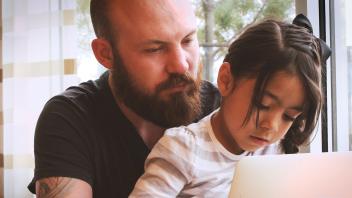Clearly, the IEP is a very important document for children with disabilities and for those who are involved in educating them. Done correctly, the IEP should improve teaching, learning, and results. Each child’s IEP describes, among other things, the educational program that has been designed to meet that child’s unique needs. This article looks at what information the IEP must, at a minimum, contain.
Contents of the IEP
By law, the IEP must include certain information about the child and the educational program designed to meet his or her unique needs. In a nutshell, this information includes:
- Current performance
The IEP must state how the child is currently doing in school (known as present levels of educational performance). This information usually comes from the evaluation results such as classroom tests and assignments, individual tests given to decide eligibility for services or during reevaluation, and observations made by parents, teachers, related service providers, and other school staff. The statement about “current performance” includes how the child’s disability affects his or her involvement and progress in the general curriculum.
- Annual goals
These are goals that the child can reasonably accomplish in a year. The goals are broken down into short-term objectives or benchmarks. Goals may be academic, address social or behavioral needs, relate to physical needs, or address other educational needs. The goals must be measurable-meaning that it must be possible to measure whether the student has achieved the goals.
- Special education and related services
The IEP must list the special education and related services to be provided to the child or on behalf of the child. This includes supplementary aids and services that the child needs. It also includes modifications (changes) to the program or supports for school personnel-such as training or professional development-that will be provided to assist the child.
- Participation with nondisabled children
The IEP must explain the extent (if any) to which the child will not participate with nondisabled children in the regular class and other school activities.
- Participation in state and district-wide tests
Most states and districts give achievement tests to children in certain grades or age groups. The IEP must state what modifications in the administration of these tests the child will need. If a test is not appropriate for the child, the IEP must state why the test is not appropriate and how the child will be tested instead.
- Dates and places
The IEP must state when services will begin, how often they will be provided, where they will be provided, and how long they will last.
- Transition service needs
Beginning when the child is age 14 (or younger, if appropriate), the IEP must address (within the applicable parts of the IEP) the courses he or she needs to take to reach his or her post-school goals. A statement of transition services needs must also be included in each of the child’s subsequent IEPs.
- Needed transition services
Beginning when the child is age 16 (or younger, if appropriate), the IEP must state what transition services are needed to help the child prepare for leaving school.
- Age of majority
Beginning at least one year before the child reaches the age of majority, the IEP must include a statement that the student has been told of any rights that will transfer to him or her at the age of majority. (This statement would be needed only in states that transfer rights at the age of majority.)
- Measuring progress
The IEP must state how the child’s progress will be measured and how parents will be informed of that progress.
